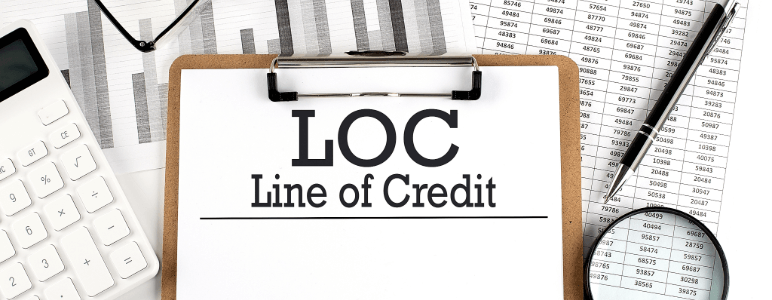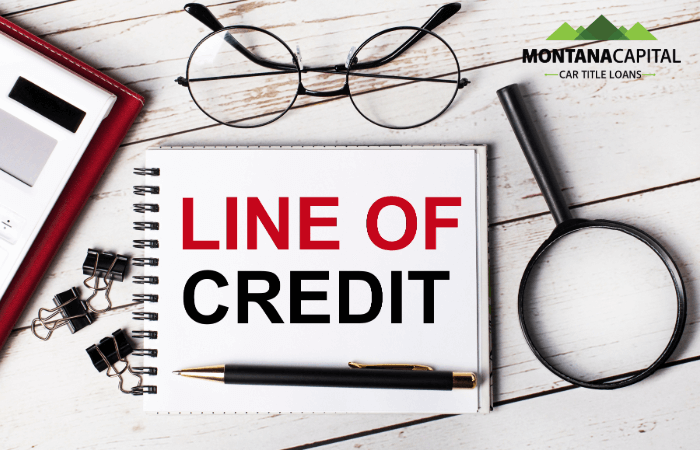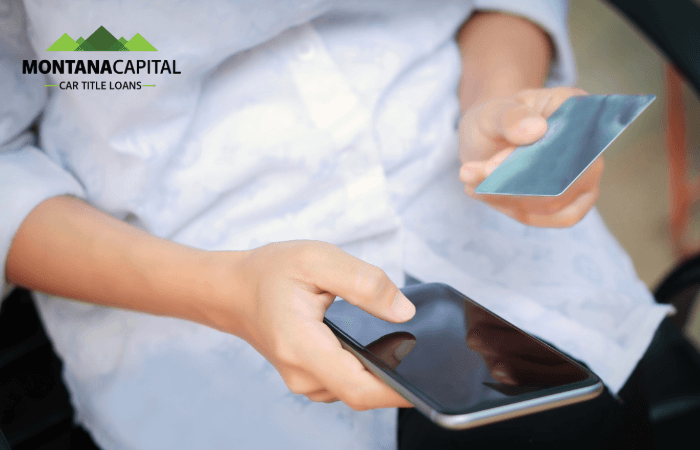Having bad credit doesn’t mean you’re locked out of flexible financing options. Despite what many people believe, you can get a line of credit with bad credit – you just need to know where to look and how to navigate the application process strategically.
While traditional banks may turn you away, numerous lenders specialize in serving borrowers with low credit scores. From credit unions to online lenders, options exist that can provide the flexible access to funds you need while helping you rebuild your credit history along the way.
If you’re facing unexpected expenses or need to bridge a gap in your cash flow, we offer flexible solutions to get you the money you need, fast—often on the same day.
Upon approval, the funds are directly deposited into your bank account. Fill out our request form today to find out how much you can qualify for with no obligation.
Key Takeaways
- Lines of credit are available for borrowers with bad credit scores below 580
- Secured lines of credit using home equity or collateral offer better rates than unsecured options
- Credit limits typically range from $300 to $100,000 depending on the lender and credit type
- Interest rates for bad credit lines of credit range from 15% to 35% annual percentage rate
- Online lenders and credit unions often provide more flexible approval criteria than traditional banks
- Building credit history through responsible use can help qualify for better terms over time
Understanding Lines of Credit with Bad Credit
A line of credit provides revolving access to funds up to a preset credit limit, functioning differently from traditional personal loans. Unlike personal loans that provide a lump sum upfront, a credit line allows you to borrow only what you need, when you need it.
Interest charges apply only on the amount borrowed, not the full credit limit. This makes lines of credit particularly valuable for managing cash flow gaps or unexpected expenses where you might not know the exact loan amount needed upfront.
Bad credit is typically defined as a FICO score below 580. For borrowers in this range, lines of credit offer more flexibility than traditional personal loans for ongoing expenses. The revolving nature means you can pay down the outstanding balance and borrow again without reapplying, providing ready access to funds as your financial situation changes.
Minimum monthly payments are based on your current outstanding balance, not the total credit limit. You can access funds through checks, debit card transactions, or online transfers to your bank account, giving you multiple ways to tap into your available credit when unexpected bills arise.
This flexibility makes credit lines ideal for covering medical bills, home improvements, or other variable expenses where the timing and loan amounts may be unpredictable.
Types of Lines of Credit for Bad Credit Borrowers
Secured Lines of Credit
Secured lines of credit require collateral, which significantly reduces the lender’s risk and often results in better loan terms for borrowers. The most common type is a Home Equity Line of Credit (HELOC), which uses your home equity as collateral.
These secured loans typically offer lower interest rates – often 5 to 10 percentage points below comparable unsecured options. Credit limits for secured lines usually range from 80% to 90% of your collateral value, potentially providing substantial borrowing power.
Certificate of deposit (CD) secured lines represent another option, where your savings account or CD serves as collateral. This allows renters or those without home equity to access secured lending options.
The primary risk with any secured line is the potential loss of your collateral if you default on payments. However, the improved loan approval odds and better rates make secured options attractive for borrowers who have assets to pledge.
Unsecured Lines of Credit
Unsecured lines of credit don’t require collateral, making them accessible to a broader range of borrowers. However, this increased risk for lenders typically results in higher interest rates and lower credit limits for bad credit applicants.
Credit limits for unsecured lines generally range from $300 to $25,000 for borrowers with poor credit. Loan approval depends primarily on your income, debt-to-income ratio, and overall credit profile rather than asset ownership.
These products particularly suit renters and those without substantial assets to use as collateral. While you’ll pay a higher interest rate compared to secured options, your personal assets remain protected from seizure if you encounter payment difficulties.
Many lenders offering unsecured lines use alternative underwriting criteria, considering factors like banking history and income stability alongside traditional credit scores.
Comparison of Secured vs. Unsecured Lines of Credit for Bad Credit Borrowers
| Key Factor | Secured Lines of Credit | Unsecured Lines of Credit |
| Collateral Required | Yes (e.g., Home Equity, CD) | No |
| Interest Rates | 5% – 10% lower than unsecured options | Higher interest rates |
| Credit Limits | 80% – 90% of collateral value | $300 – $25,000 |
| Approval Factors | Collateral value, income, credit profile | Income, debt-to-income ratio, overall credit profile |
| Risks | Risk of losing collateral if payments are not made | Higher rates, no collateral protection |
Qualification Requirements and Application Process
To qualify for a line of credit with bad credit, most lenders require you to meet some basic eligibility criteria:
- Age and Residency: You must be at least 18 years old and a legal U.S. resident authorized to enter into loan agreements.
- Income: Stable, verifiable income of at least $800 to $1,000 per month from employment, benefits, or other documented sources.
- Debt-to-Income Ratio: Typically must be below 40% to 50%, including your potential new payment. Paying down existing debt before applying can improve your chances.
- Bank Account: An active checking account in good standing for receiving funds and setting up automatic payments.
- Identification: Government-issued photo ID and your Social Security Number (SSN) or Individual Taxpayer Identification Number (ITIN) for verification.
- Documentation: Recent pay stubs, tax returns, or bank statements to verify income. Additional documents may be requested depending on your employment or income type.
Application Process
- Online Start: Most lenders offer an online application that takes just a few minutes for initial prequalification.
- Soft Credit Check: Many lenders begin with a soft credit check that does not impact your credit score, allowing you to pre qualify and compare loan offers.
- Full Application: After prequalification, submitting a full application usually triggers a hard credit inquiry.
- Decision Timeline: Most lenders provide an instant decision or respond within one business day.
- Funding Timeline: If approved, funds are typically available within 1-3 business days. Some lenders offer same day funding for qualified applicants.
This streamlined process helps you understand your options and get fast access to funds while minimizing impact on your credit score.
Interest Rates and Fees for Bad Credit Lines of Credit
Interest rates for bad credit lines of credit are substantially higher than those offered to borrowers with perfect credit. Expect annual percentage rates ranging from 15% to 35%, with your specific rate depending on your credit score, income, and the type of credit line.
Secured lines generally offer rates 5-10 percentage points lower than unsecured options due to the reduced lender risk. For example, a secured line might charge 18% APR while a comparable unsecured product costs 28% APR.
Beyond interest charges, various fees can significantly impact your total borrowing cost. Origination fees may range from $25 to $500, or up to 12% of your credit limit with some lenders. These fees are often deducted from your initial funds deposited.
Annual fees for maintaining the line of credit typically range from $39 to $175. While this might seem modest, it represents a significant cost percentage for smaller credit lines.
Late payment fees usually fall between $15 and $39 per occurrence, making timely payments crucial for cost control. Over-limit fees may apply if you exceed your approved credit limit, adding additional fees to your loan balance.
Many lenders also charge higher rates for cash advances compared to regular draws, so understanding how you access funds can impact your costs.
Lender Tip:
When comparing loan offers, calculate the total cost including all fees rather than focusing solely on the advertised interest rate. This gives you a clearer picture of what each option will actually cost over time.
Example of Interest Rates and Fees for Bad Credit Lines of Credit:
| Type of Credit Line | Interest Rate (APR) | Origination Fees | Annual Fees | Late Payment Fees | Over-limit Fees | Total Cost Example (for $2,000 credit line) |
| Secured Line of Credit | 18% | $100 (one-time fee) | $50 (annual) | $25 per occurrence | $35 if over limit | $2,150 (includes fees and interest for 1 year) |
| Unsecured Line of Credit | 28% | $200 (one-time fee) | $75 (annual) | $35 per occurrence | $40 if over limit | $2,350 (includes fees and interest for 1 year) |
Explanation:
- Secured Line of Credit: With a 18% APR, a $2,000 credit line would accrue $360 in interest over a year. Adding the origination fee ($100) and the annual fee ($50), plus one late payment ($25), the total cost for one year would be around $2,150.
- Unsecured Line of Credit: With a 28% APR, a $2,000 credit line would accrue $560 in interest over a year. Adding the origination fee ($200) and the annual fee ($75), plus one late payment ($35), the total cost for one year would be around $2,350.
In both cases, additional fees like over-limit fees could further increase the cost if the borrower exceeds their credit limit.
Strategies to Improve Approval Chances
Several strategic approaches can significantly improve your chances of securing a line of credit with bad credit. Consider the following tips:
- Apply with financial institutions where you have an established relationship
Start with your primary bank or credit union membership to leverage existing trust. - Add a cosigner with good credit
A cosigner guarantees the debt, reducing lender risk and potentially qualifying you for better terms or higher credit limits. - Document stable employment and consistent income
Gather pay stubs, employment letters, and bank statements to demonstrate reliable cash flow. - Pay down existing debt before applying
Improving your debt-to-income ratio, even slightly, can increase approval chances. - Request smaller credit limits initially
Lenders are more willing to approve modest amounts for higher-risk borrowers; you can request increases later after responsible use. - Apply for secured lines of credit if you have collateral
These are generally easier to obtain and offer better terms than unsecured alternatives. - Consider online lenders using alternative underwriting criteria
Some third party lenders evaluate banking history, employment stability, and income trends beyond traditional credit scores.
These strategies can help you present a stronger application and improve your odds of loan approval.
Using Your Line of Credit Responsibly
Responsible use of your credit line is crucial for managing costs and rebuilding your credit profile. Here are some key tips to help you use your line of credit wisely:
- Keep utilization low: Aim to use less than 30% of your total credit limit. For example, with a $1,000 credit limit, keep your outstanding balance below $300.
- Make timely payments: Always pay at least the minimum amount on time to avoid late fees and negative credit reporting. Setting up automatic payments from your checking account can help you stay on track.
- Pay more when possible: Paying more than the minimum reduces interest charges and helps pay down the principal faster. Even an extra $25 per month can make a big difference over time.
- Use funds intentionally: Reserve your line of credit for planned expenses like managing cash flow gaps, unexpected bills, or large purchases—not for everyday spending.
- Monitor your account regularly: Use online banking or mobile apps to track spending, avoid exceeding your credit limit, and spot any errors or unauthorized transactions quickly.
- Avoid cash advances: These often come with higher fees and interest rates compared to regular draws on your line of credit.
Following these guidelines will help you manage your credit responsibly and improve your financial health.
Building Credit Through Line of Credit Use
Consistent, responsible use of your line of credit can significantly improve your credit scores over time. Payment history accounts for 35% of your credit score calculation, making on-time payments the most important factor in credit rebuilding.
Low credit utilization demonstrates responsible credit management to future lenders. Maintaining balances well below your credit limit shows you can manage available credit without maximizing your borrowing capacity.
Positive changes to your credit profile can begin appearing within 3-6 months of responsible use. Many borrowers see meaningful score improvements within this timeframe if they maintain good payment habits.
Longer account history contributes positively to your credit score over time. Keeping your line of credit open and in good standing builds the length of credit history that credit scoring models favor.
After 6-12 months of good payment history, many lenders will consider credit limit increases or allow you to graduate to unsecured products if you started with a secured line. These improvements can provide better terms and more financial flexibility.
Request periodic credit limit increases as your financial situation improves. Higher limits with the same usage patterns automatically improve your utilization ratios and credit scores.
Common Mistakes to Avoid
Avoid these common pitfalls to improve your chances of successful borrowing and maintain a healthy credit profile:
- Applying to multiple lenders simultaneously can result in numerous hard credit inquiries within a short period, potentially lowering your credit scores further. Instead, use prequalification tools when available and limit full applications to your most promising options.
- Using your entire credit limit immediately can negatively impact your credit scores and signal financial distress to lenders. Start with modest borrowing and gradually increase usage as needed.
- Making only minimum payments extends your repayment period and dramatically increases total interest costs. Even small additional payments can save significant money over time.
- Failing to read loan agreements carefully can result in unexpected fees or terms that don’t match your expectations. Understanding origination fees, annual fees, and penalty charges helps you avoid costly surprises.
- Using lines of credit for non-essential purchases can lead to debt accumulation without corresponding value. Focus on using credit for necessities, cash flow management, or investments that provide long-term benefits.
- Ignoring account statements and missing payment due dates leads to late fees and negative credit reporting. Set up payment reminders or automatic payments to maintain good standing with your lender.
Alternatives to Lines of Credit for Bad Credit
Consider these alternatives if a line of credit isn’t the right fit for you:
- Secured credit cards: Often easier to qualify for than lines of credit, these cards require a security deposit and typically have lower fees with more predictable terms. They provide a reliable way to rebuild credit.
- Personal installment loans: These loans offer fixed payments and set payoff dates, making budgeting simpler compared to revolving credit. Some borrowers prefer the structured repayment schedule.
- Payday alternative loans (PALs): Offered by credit unions, PALs provide short-term funding at regulated rates that are usually much lower than traditional payday loans, helping bridge short-term cash needs affordably.
- Peer-to-peer lending platforms: These platforms connect borrowers with individual investors and may offer competitive rates for bad credit applicants by considering factors beyond credit scores.
- Family or friend loans: Borrowing from personal connections can avoid credit checks and high fees, but it’s important to have written agreements to protect relationships and clarify repayment terms.
- Employer salary advances or hardship programs: Some employers provide financial assistance options for emergencies, often with little or no cost compared to commercial loans.
Exploring these alternatives can provide flexible financing options suited to your unique situation and credit profile.
FAQ
Can I Get a Line of Credit with a 500 Credit Score?
Yes, some lenders accept credit scores as low as 500, particularly for secured lines of credit. However, you’ll face higher interest rates and lower credit limits than borrowers with better credit.
What’s the Difference Between a Line of Credit and a Credit Card?
Lines of credit typically offer lower interest rates and provide cash directly to your bank account, while credit cards are designed for purchases and may have higher rates for cash advances.
How Quickly Can I Access Funds from a Line of Credit?
Most lenders provide access within 1-3 business days after approval, with some offering same-day funding for qualified applicants.
Can I Pay Off My Line of Credit Early?
Most lines of credit allow early payoff without prepayment penalties, potentially saving you money on interest charges.
How to Get a Hardship Loan with Bad Credit?
To get a hardship loan with bad credit, follow these steps:
- Research lenders specializing in loans for borrowers with low credit scores.
- Prepare documentation demonstrating your financial hardship, such as proof of income loss or unexpected expenses.
- Consider applying with a cosigner or choosing secured loans to improve approval chances.
- Use prequalification tools to compare multiple offers without triggering hard credit checks.
Always review loan terms carefully to avoid hidden fees and ensure the loan fits your repayment ability.
How Can I Get $2,000 with Bad Credit?
You can get $2,000 with bad credit through a personal line of credit, personal loan, payday loan, title loan, unsecured loan, or secured loan. Improve approval chances by choosing lenders with fast approvals and soft credit checks, providing proof of income, and using prequalification tools. Expect higher interest rates and fees. Funds are often deposited by the next business day.



